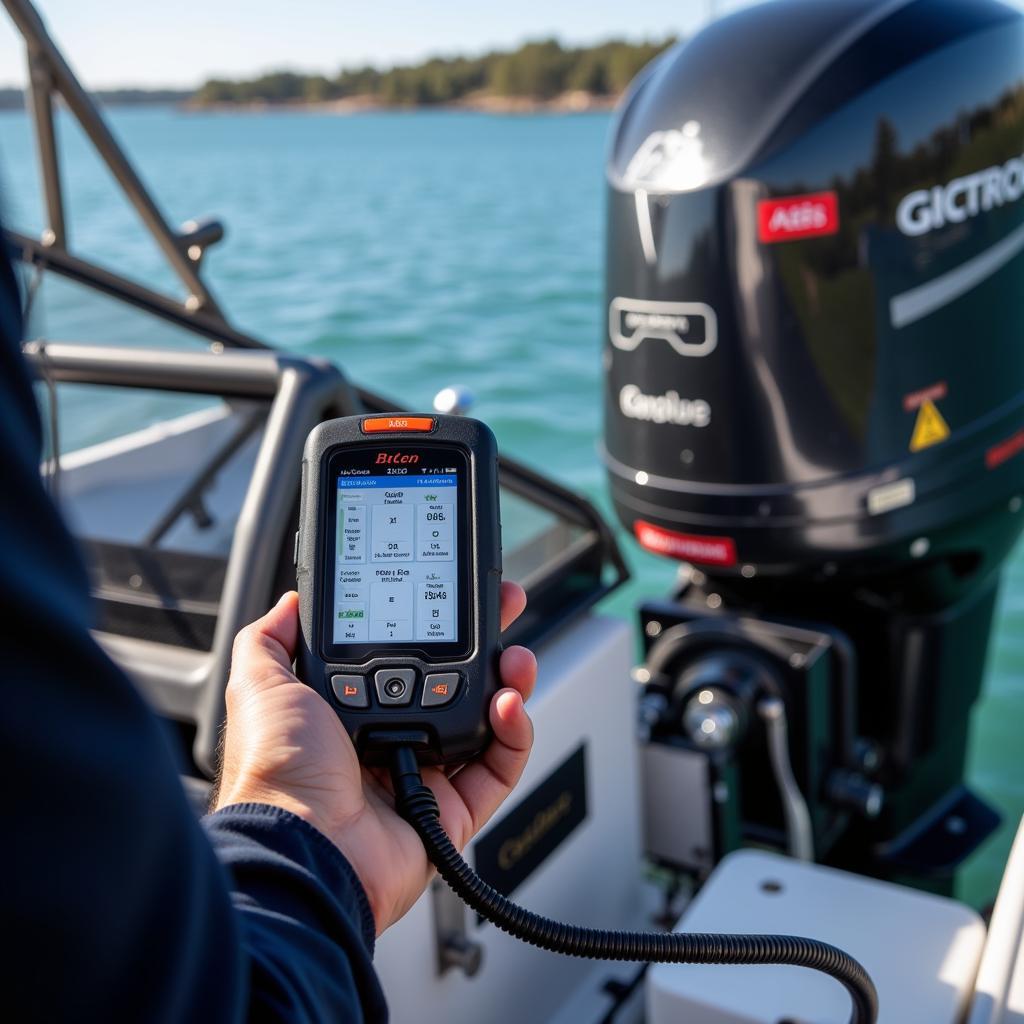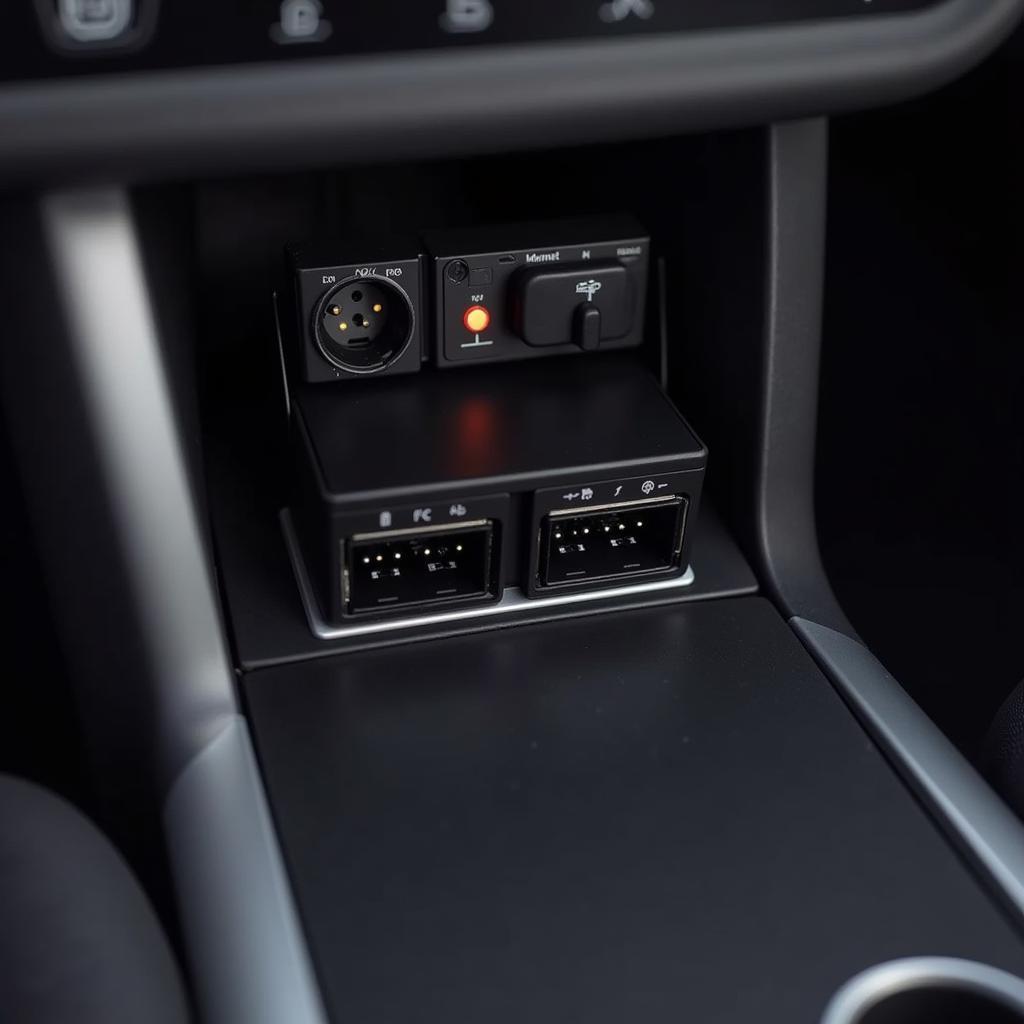Understanding and effectively using an OBD2 scan tool is crucial for any car owner, mechanic, or automotive technician. These powerful diagnostic tools provide a window into your vehicle’s inner workings, allowing you to identify and troubleshoot issues before they become major problems. This guide will walk you through everything you need to know about Obd2 Scan Tool Use, from basic operation to advanced techniques. Check out our odb2 scan tool review for more detailed information on different scan tool options.
What is an OBD2 Scan Tool and Why Do You Need One?
OBD2, or On-Board Diagnostics II, is a standardized system that allows your vehicle’s computer to communicate with a diagnostic tool. This system monitors various components and systems within your car, constantly checking for malfunctions. When a problem arises, the OBD2 system stores a diagnostic trouble code (DTC) in the vehicle’s computer memory. An OBD2 scan tool can then be used to retrieve these codes, providing valuable insights into the nature of the problem. Owning an OBD2 scan tool empowers you to take control of your vehicle’s maintenance, saving you time and money on costly repairs.
Types of OBD2 Scan Tools and Their Uses
There’s a wide range of OBD2 scan tools available, from basic code readers to advanced professional-grade scanners. Understanding the different types and their capabilities is essential for choosing the right tool for your needs. Basic code readers are affordable and can retrieve and clear DTCs. Mid-range scan tools offer additional features like live data streaming, allowing you to monitor sensor readings in real-time. High-end scan tools provide advanced functionalities such as bi-directional control, which enables you to activate various components for testing purposes. Finding the right balance of features and price is key to optimizing your OBD2 scan tool use. For information on connecting via Bluetooth, see our guide on how to use bluetooth obd2 scan tool.
How to Use an OBD2 Scan Tool: A Step-by-Step Guide
Using an OBD2 scan tool is generally straightforward. First, locate the OBD2 port in your vehicle, typically under the dashboard on the driver’s side. Next, plug the scan tool into the port and turn the ignition key to the “on” position without starting the engine. The scan tool will then power on and establish communication with the vehicle’s computer. Select the “read codes” option on the scan tool to retrieve any stored DTCs. Once you have the codes, you can use a reliable resource to look up their meanings and begin diagnosing the problem. If you encounter linking issues, see our guide: can obd2 scan tool link error.
Interpreting OBD2 Trouble Codes
OBD2 trouble codes are standardized, consisting of a letter and four numbers. The letter indicates the system affected (e.g., “P” for powertrain, “B” for body, “C” for chassis, “U” for network). The numbers specify the particular fault within that system. Understanding this structure is crucial for effective OBD2 scan tool use. While retrieving the codes is the first step, interpreting them correctly is essential for accurate diagnosis and repair.
Advanced OBD2 Scan Tool Techniques
Beyond basic code retrieval, many scan tools offer advanced functionalities. Live data streaming allows you to monitor various sensor readings in real-time, providing valuable insights into the operation of different systems. Bi-directional control lets you activate components like fuel injectors or solenoids to test their functionality. These advanced features can significantly enhance your diagnostic capabilities, allowing you to pinpoint issues more efficiently. For specific applications, consider resources like ford pc scan tools.
Common Mistakes to Avoid When Using an OBD2 Scan Tool
One common mistake is clearing codes without properly diagnosing the underlying problem. This can temporarily mask the issue and make it harder to pinpoint the root cause later. Another mistake is misinterpreting the trouble codes, leading to incorrect repairs. It’s essential to use a reliable source for code definitions and diagnostic information. Finally, failing to consider other potential factors contributing to the problem can also lead to misdiagnosis. Always consider the vehicle’s history, recent maintenance, and any other symptoms present. You can also find valuable resources on can obd 2 scan tool.
Conclusion
Mastering OBD2 scan tool use is an invaluable skill for anyone involved in automotive repair and maintenance. These versatile tools empower you to diagnose and troubleshoot problems effectively, saving you time and money. Remember, accurate diagnosis relies not only on retrieving the codes but also on interpreting them correctly and considering all potential factors. Connect with ScanToolUS at +1 (641) 206-8880 or visit our office at 1615 S Laramie Ave, Cicero, IL 60804, USA, for further assistance.


